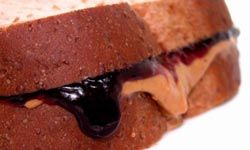Grocery stores are making money on a few select items that (not coincidentally) probably get top billing on your shopping list.
Before we dig into the facts about America's top-selling food-related fare, though, let's get one thing straight: Today's grocery stores sell more than actual products; they're mass-merchandising that lovin' feeling. From empty corners turned into cozy cafes to comfortable lounges with free Wi-Fi, shoppers everywhere are encouraged to stay awhile -- all because successfully mined data reveals a warm welcome encourages you to spend more money.
Advertisement
If you insist on taking a load off during your next visit to the local super, make sure you read this article as you sup a latte. That way, you can balance the onslaught of subliminal spending tactics with savings strategies -- at least for the top-selling grocery items on our list. We'll share our shopping secrets, faster than you can order a no-whip frappe.






